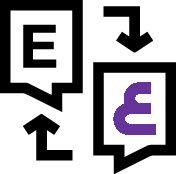A building monitoring and management solution is a powerful software platform that integrates controllers with third-party devices and internet protocols into a centralized software platform designed to manage buildings at an enterprise level. The solution serves real-time graphical information to standard web browsers and provides a range of server-level functions, including centralized data logging, archiving, alarming, trending, master scheduling, system-wide database management, and integration with enterprise software applications. These functions can be used to highlight and investigate energy use within buildings, providing valuable insights into energy efficiency and cost-saving opportunities.
The solution enables the customization of user interfaces that are viewable on diverse web-enabled computers, tablets, and phones, ensuring that users can access the information they need from anywhere, at any time.
Compatibility with third-party systems is crucial, and the solution is BACnet certified, ensuring that it can interface with a wide range of third-party systems seamlessly. It uses a network device that enables systems to interface with a wide range of third-party systems, providing flexibility and compatibility. With Input Output expansions, the solution can be customized to meet the specific needs of each building, ensuring maximum efficiency and cost savings.
The controllers used in the solution have a variety of inputs and outputs, with the main network being TCP/IP. The solution supports BACnet over IP and a variety of ports, such as USB and RS232, ensuring that it can communicate with a wide range of devices and systems.
In summary, a building monitoring and management solution is a comprehensive software platform that integrates controllers with third-party devices and internet protocols into a centralized software platform designed to manage buildings at an enterprise level. The solution serves real-time graphical information to standard web browsers and provides a range of server-level functions, including centralized data logging, archiving, alarming, trending, master scheduling, system-wide database management, and integration with enterprise software applications. It is compatible with third-party systems, BACnet certified, and uses a network device that enables systems to interface with a wide range of third-party systems. It supports Input Output expansions, with controllers having a variety of inputs and outputs, and communicates using a variety of ports, such as USB and RS232.

